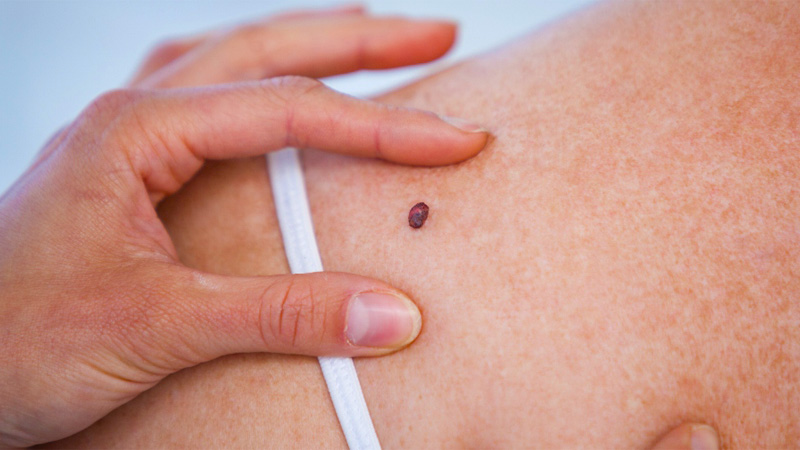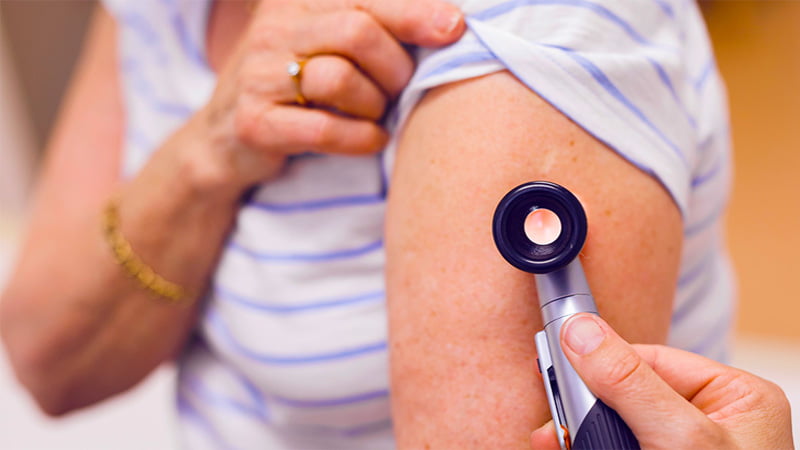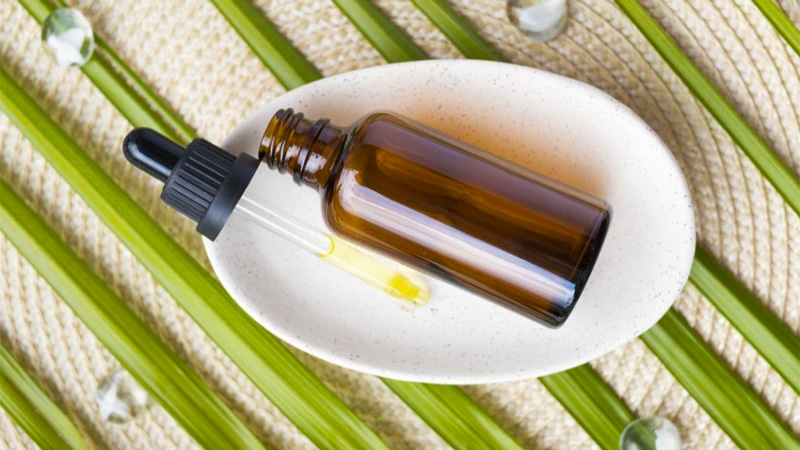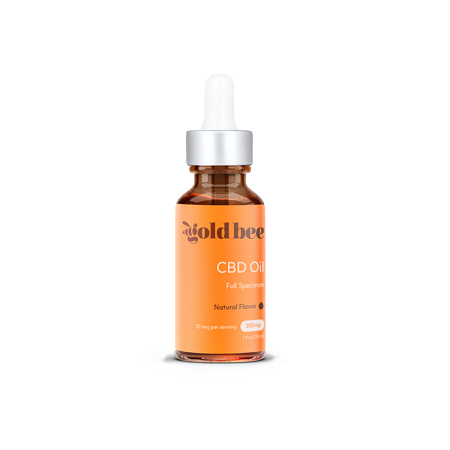CBD Oil for Skin Cancer – Benefits & Top Brands of 2023

While CBD oil isn’t the forefront treatment for skin cancer, there’s evidence that supports its use as an adjunctive therapy and a way to deal with the nasty side effects of chemotherapy.
CBD has been making big headlines in the skincare space, but now it’s being examined as a potential therapeutic compound in the treatment of a wide range of skin conditions, including cancer.
Previously, research has shown that CBD can help people with epilepsy, loss of appetite or anorexia, irritable bowel syndrome, and various types of autoimmune disorders.
While there are plenty of CBD-based topical products out there, not all CBD extracts are sourced the same — and that’s the biggest problem on the market right now.
Fortunately, there are several reputable companies that you can turn to if you’re looking for the best CBD oils to use for skin cancer.
In this article, I leave no stone unturned while exploring CBD’s potential in that regard.
CBD Oil for Skin Cancer: Highlights
- CBD triggers specific mechanisms in the body that are responsible for the growth and spread of tumors, such as apoptosis and cancer cell proliferation.
- CBD may also help with the side effects of conventional skin cancer treatment. CBD can help with pain and inflammation, loss of appetite, nausea, vomiting, and fatigue.
- CBD has a very good safety profile. It’s well-tolerated by humans in doses as high as 1,500 mg daily.
- The side effects of CBD are mild and include dry mouth, dizziness, changes in appetite, and diarrhea.
- That being said, CBD isn’t an acknowledged cancer treatment. Consult its use with your doctor to figure out the right dosage and avoid interactions with other medications.
Best CBD Oils for Skin Cancer
When choosing the recommended CBD oils for my lists, I always follow strict criteria based on quality, safety, and transparency. Each brand from this ranking has been tested for the following:
- Certificates of analysis from a third-party, ISO 17025-compliant laboratory, including the results for purity.
- The source of hemp (U.S.-grown, non-GMO, pesticide-free)
- THC levels (0.3% or less, according to the 2018 Farm Bill)
- Extraction method
When I was preparing the material for this article, I also checked:
- The company’s manufacturing practices
- The potency of CBD
- Additional ingredients in the product could help with skin cancer or the side effects of cancer treatment.
Finally, I looked at:
- Customer feedback
- Whether the company has a history of warning letters with the FDA
- Whether the company is facing any lawsuits for unsupported health claims
Here are my top picks when it comes to using CBD oil for skin cancer.
1. Royal CBD
Get 15% off all Royal CBD products. Use code “CFAH” at checkout.
| Pros | Cons |
|
|
Royal CBD is one of the best brands if you’re looking for full-spectrum CBD products from organic hemp. The company was launched in 2018 and since then has become a true hemp powerhouse, offering a broad range of products — including CBD oils, capsules, edibles, topicals, and even CBD for pets.
When it comes to skin cancer, two of their CBD products could help improve your quality of life and deal with the effects of cancer. The first one is the full-spectrum 2500 mg CBD oil, which is the strongest product in the company’s line-up. At 83.3 mg of CBD per mL, it can be used to deal with pain, inflammation, loss of appetite, and nausea.
And, if you’re looking to address localized discomfort, the company offers two types of topicals: a calming salve and a roll-on stick. Both products come with 500 mg of CBD and a range of calming ingredients, such as aloe vera, menthol, green tea extract, and arnica.
2. Gold Bee
| Pros | Cons |
|
|
Gold Bee is a great example of a company that combines CBD with other superfoods to leverage synergistic effects between natural compounds. Its products come infused with organic coconut oil and raw honey from Brazilian rainforests, ensuring well-rounded effects and an outstanding flavor experience.
Like Royal CBD, Gold Bee also has a high-strength product line, featuring 2400 mg full-spectrum CBD oil and 2000 mg Pain Freeze roll-on stick; both products are third-party lab tested for quality and safety, including pesticides, solvents, heavy metals, and microbial impurities.
What Exactly Is Skin Cancer?

According to the National Cancer Institute, cancer is a group of related diseases in which the body experiences an abnormal growth of its cells that spread into the surrounding tissue (1).
The human body contains trillions of cells that are constantly growing and dividing to create new cells in balance. When cells suffer from damage or get old, they die and the new ones replace them. Cancer alters this process.
When cancer starts to grow, abnormalities in the process of cell division appear. Malicious cells form, old or damaged cells survive when they should die, and new cells are created for no reason.
Those excessive cells divide rapidly, forming a tumor. The main difference between normal and cancer cells is the rate at which they grow and spread. Cancer cells are less specific than normal cells, but they still influence the healthy molecules, cells, and blood vessels in the surrounding area. This region is known as the tumor microenvironment (2).
When it comes to skin cancer, it involves the same process — but relates to the abnormal growth of skin cells. It may occur on skin that has been exposed to the sun for too long but can also appear in other areas.
How Do You Identify Skin Cancer Types?
In essence, skin cancers can be broken down into two categories: melanoma and non-melanoma skin cancers. It usually starts in the outer layer of the skin where you can see it with the naked eye, so an early diagnosis is a little easier than with other forms of cancer.
The most types of skin cancer are (3):
- Basal cell carcinoma
- Melanoma
- Merkel cell cancer
- Squamous cell carcinoma
The first two types aren’t as aggressive as the remaining ones.
Basal cells are round cells that occur in the lower epidermis of the skin; they’re involved in 80% of skin cancer cases.
Squamous cells are flat, scaly cells that make up the majority of the epidermis. They are related to approximately 20% of skin cancers, especially in areas of intense sun exposure. Basal cell and squamous cell carcinoma are also known as keratinocyte carcinomas or non-melanoma skin tumors (4).
Merkel cell cancer is highly aggressive doesn’t have such a high-frequency rate as the two above types. It is triggered by the hormone-producing cells found just under the skin, usually on the head and neck area. Researchers also refer to it as neuroendocrine carcinoma of the skin.
Last but not least, melanoma affects the skin cells responsible for pigment production. These cells are called melanocytes and once they become malignant, they contribute to the most severe type of skin cancer.
Rarer forms of skin cancers include skin adnexal tumors, lymphomas, and Kaposi sarcoma.
Common Conventional Treatments for Skin Cancer

Skin cancer is the most prevalent form of cancer in the United State and has grown to a huge public concern. Researchers have been investigating this disease for years, contributing to the development of numerous novel treatments.
Unfortunately, even with these contemporary upgrades, the average cost of skin cancer treatment exceeds $8 billion per year (5).
The most common treatment options for skin cancer include:
- Cryotherapy
- Curettage
- Chemotherapy
- Excisional surgery
- Mohs surgery
- Photodynamic therapy
- Radiation therapy
Although many modern cancer treatments are more effective than their older counterparts, they are very expensive, and in some cases, the risks still outweigh the benefits.
In a 2018 review of studies published in the International Journal of Molecular Sciences, the authors suggested that phytochemicals may be the next groundbreaking form of skin cancer treatment that is safe, effective, and affordable for patients (6).
Phytochemicals are simply biologically active molecules sourced from plants.
Many phytochemicals demonstrate anticarcinogenic effects due to their antioxidant, anti-angiogenic, anti-proliferative, and anti-inflammatory effects.
Cannabinoids are one group of phytochemicals that appear particularly promising for cancer patients.
Can CBD Oil Help in Skin Cancer Treatment?
Cannabinoids are natural phytochemicals unique to cannabis plants. Cannabidiol (CBD) is the most prevalent cannabinoid in hemp, a low-THC variety of Cannabis sativa, while tetrahydrocannabinol (THC) is more highly concentrated in marijuana.
There’s a significant difference between CBD and THC. While THC can get you high, CBD doesn’t have such properties. For that reason, CBD is also legal on the federal level — and so are hemp-derived products as long as they contain no more than 0.3% THC.
When it comes to using CBD oil for cancer and other variants, there are a few cannabis types to consider. Medical cannabis, also known as medical marijuana, typically contains higher levels of THC next to CBD because such plants come from selective breeding. Hemp-derived CBD, on the other hand, will only have a trace amount of THC.
Hemp-based products are a good place to start for skin cancer, especially if you’re sensitive to the psychedelic effects of THC. They’re also more accessible considering the legal status of hemp and marijuana.
As mentioned, the form you choose depends on the symptoms you’re trying to target and also the type of cancer you are dealing with. CBD oil can boost your endocannabinoid system and reverse some of the tumorigenic processes in your body with the help of other treatments to aid with the side effects from severe diseases like leukemia. CBD topicals can be useful for any flare-ups on your skin that cause localized pain.
Research on CBD Oil and Skin Cancer
- A 2015 study posted in the Journal of Investigative Dermatology showed that a combination of CBD and THC induced autophagy (the breakdown of redundant cell components while keeping the healthy ones safe) of malignant cells. It also enabled cell death and blocked the spread of cancer cells in vitro (7).
- Another in vitro study on skin cancer was published in the Journal of Pharmacy and Pharmacology; it showed that mice treated with CBD had 90% fewer melanoma cells (8).
- Another study posted by the Federation of American Societies for Experimental Biology found that CBD connects to cancerous cells on the skin that contain cannabinoid receptors — explaining the mechanisms behind the two above findings (9).
- A study from Vanderbilt University showed that CBD blocks angiogenesis, which is the process of providing a tumor with more blood, stimulating its growth and spread in the body. By inhibiting this process, CBD may cause tumor cells to stop receiving blood and die over time as a result (10).
How Does CBD Oil Work for Skin Cancer?
People have been using cannabis as a natural remedy for various conditions, but since the plant has long been kept illegal over the past century, clinical research is lacking when it comes to its benefits for skin cancer.
Fortunately, the past decade yielded numerous studies that made important discoveries about cannabinoids like CBD and THC, as well as their effects on the human body.
The therapeutic properties of cannabinoids are mostly associated with their interactions with the endocannabinoid system (ECS). The ECS is a complex neurochemical signaling system that plays an essential role in regulating important biological processes and in maintaining balance (homeostasis) between other systems and peripheral organs (11).
By acting on cannabinoid receptors in the ECS, CBD offers antioxidant, anti-inflammatory, analgesic, and anxiolytic benefits (12, 13).
Although more studies are needed, the current body of evidence has shown cannabis oil may provide various anti-cancer effects. In a review of the scientific literature relating to CBD as a potential anticancer drug, it has been shown to cause the death of cancer cells, block their migration and invasion (in vitro), reduce tumor size, weight, and vascularization, and increase survival rate on top of inducing tumor regression (14).
The aforementioned features relate to the use of CBD for glioma, a malignant type of brain cancer, but similar effects have been reported in studies examining CBD’s effects on lung cancer and other types like prostate, colorectal, and lymphoma.
So far, the results are promising, but we need to open large-scale clinical trials to make CBD an official cancer treatment according to current procedures.
Applying CBD Oil on Skin Cancer Ways

There are several ways you can use CBD oil for skin cancer. Let’s take a look at the most popular formats.
Tinctures
Tinctures are hemp extracts suspended in carrier oils that boost the absorption of CBD. Using a CBD tincture allows the user to measure out a precise dose; tinctures are usually available in a wide range of potencies, from 100 mg to 5000 mg of CBD. The best CBD oils for skin cancer are made with a full-spectrum hemp extract due to the presence of the entourage effect. CBD tinctures are taken under the tongue to enhance absorption through the capillary glands in the mouth.
Edibles
If you don’t like the taste of full-spectrum CBD oil, edibles offer a good alternative for bringing your daily dose of CBD enjoyably. They usually come as gummies or chocolate bars; the onset of effects is delayed due to the first-pass metabolism in the liver, but on the other hand, they last longer than other forms of cannabidiol.
Capsules
Capsules work similarly to edibles. They don’t work as fast as tinctures or vapes, but instead, they offer longer-lasting effects and a precise dose in each serving. One thing you’re missing with capsules when using CBD for skin cancer is quite a lot of bioavailability. Oral forms of CBD are the least bioavailable of all products, meaning that you’re getting much less CBD from your dose.
Topicals
CBD topicals are applied to the area of the skin that needs to be targeted. You can find a lot of different formulas on the market, including pain relief creams and roll-on sticks. They usually contain a high concentration of CBD due to not-so-obvious absorption rates. They can relieve pain and other symptoms of skin cancer by interacting with cannabinoid receptors in the lower layers of the skin.
Vapes
Vaporization offers the fastest and most bioavailable way to deliver CBD to your system. If you’re using CBD for pain, anxiety, or sleep, vapes produce their effects within minutes because CBD is absorbed by the lung tissue and avoids the liver. That being said, the effects are relatively short-lived, lasting up to 3-4 hours. You should also watch out for products infused with additives like propylene glycol, vegetable glycerin, vitamin E, or MCT oil because they become toxic when heated.
Oromucosal
Oromucosal CBD sprays are applied to the mouth of the cancer patient. The mucus lining in the mouth facilitates faster absorption, spurring the onset of CBD.
Intranasal
Just like oromucosal CBD oils are sprayed into the mouth of the cancer patient, intranasal sprays are applied to the nose. Pain relief CBD sprays may be particularly effective in easing the side effects of an ongoing radiation or chemotherapy session. Again, the mucus lining in the nose is a great place for CBD to get absorbed faster and more effectively.
CBD Alleviating the Side Effects of Skin Cancer Treatment
Current cancer treatment options are very aggressive because they flood the entire body with free radicals, destroying not only the cancerous cells but also the healthy ones.
That’s why cancer patients often experience severe side effects, such as nausea and vomiting, chronic pain, inflammation, fatigue, loss of appetite, and sleeplessness.
On top of possessing anti-cancer properties, CBD can help ease the said side effects by optimizing the endocannabinoid system and acting on over 60 molecular pathways.
For example, CBD can:
- Reduce the dryness and inflammation of the skin caused by eczema and other internal body organs, easing pain and irritation in skin cancer patients (15). CBD products such as tinctures, capsules, vapes, and topicals can be used to curb inflammation and increase the patient’s comfort.
- CBD and other cannabinoids can regulate nausea and vomiting through endocannabinoid signaling and their affinity with serotonin receptors (16).
- Hemp-derived CBD oils are a rich source of antioxidants, which not only help moisturize the skin but also protect cells against the free radical damage induced by cancer treatments and cancer itself (17).
- CBD can ease Irritable Bowel Syndrome, which is another medical condition that may occur in skin cancer patients after receiving chemotherapy or radiation (18).
Is CBD Oil Safe for Skin Cancer?

CBD is considered a safe substance; it has a very good safety profile, according to WHO’s report from 2017 (19). A review of cannabidiol’s safety and side effects concluded that the compound is safe and tolerated in very high doses, such as 1,500 mg administered daily for several weeks, without dangerous side effects (20).
That being said, CBD may produce a few adverse reactions if you take too much, including:
- Dry mouth
- Dizziness caused by a drop in blood pressure
- Changes in appetite
- Fatigue
- Diarrhea
CBD can also interact with a lot of pharmaceutical medications because it targets the same metabolic enzymes (21). Skin cancer patients should always consult their doctor before adding CBD to their routine to make sure no negative interactions occur. The doctor will help you establish the right dosage of both substances aside from the proper timing.
Evidence of CBD Helping With Other Types of Cancer
The first records of CBD’s positive effects on human diseases come from epilepsy patients. It proved effective in patients of all age groups, from children to the elderly. This had motivated researchers to fuel more resources into examining different medical areas where CBD could help, including cancer.
A 2019 study from the Journal of Pancreatic Cancer noted that CBD has numerous benefits when used for pancreatic cancer. The list included slower tumor growth and self-induced death of cancer cells (apoptosis) (22).
Two other studies, published in Oncotarget Open Access Impact Journal and Journal of Neurooncology, have highlighted CBD as a promising agent in killing gliomas (brain tumor) cells. They not only killed the cancer cells but also strengthened the effects of the conventional treatment (23, 24).
Summarizing CBD’s Potential As a Treatment for Skin Cancer
Conventional treatments for skin cancer have their limitations, so any kind of relief is welcomed. CBD has proven to be incredibly useful for cancer patients, including the ones spreading on the skin.
The side effects are usually minimal and range from dry mouth to changes in appetite and occasional dizziness from too high doses of CBD. There’s also a risk of interactions with other medications, so be sure to talk to your doctor before using CBD as an adjunctive treatment for skin cancer.
Keep in mind that CBD isn’t an acknowledged cancer treatment, so it shouldn’t be used as a substitute for other recommended therapies.
Sources:
- National Cancer Institute (2022). What is Cancer? Cancer.gov. Retrieved from: https://www.cancer.gov/about-cancer/understanding/what-is-cancer
- Wang, J. J., Lei, K. F., & Han, F. (2018). Tumor microenvironment: recent advances in various cancer treatments. European review for medical and pharmacological sciences, 22(12), 3855–3864. https://doi.org/10.26355/eurrev_201806_15270
- Transplant Skin Cancer Network. (2021). Types of Skin Cancer. University of California San Francisco. Retrieved from: https://skincancer.ucsf.edu/types-skin-cancers
- Nagarajan, P., Asgari, M. M., Green, A. C., Guhan, S. M., Arron, S. T., Proby, C. M., Rollison, D. E., Harwood, C. A., & Toland, A. E. (2019). Keratinocyte Carcinomas: Current Concepts and Future Research Priorities. Clinical cancer research: an official journal of the American Association for Cancer Research, 25(8), 2379–2391. [1]
- Guy, G. P., Jr, Machlin, S. R., Ekwueme, D. U., & Yabroff, K. R. (2015). Prevalence and costs of skin cancer treatment in the U.S., 2002-2006 and 2007-2011. American journal of preventive medicine, 48(2), 183–187. https://doi.org/10.1016/j.amepre.2014.08.036
- Ng, C. Y., Yen, H., Hsiao, H. Y., & Su, S. C. (2018). Phytochemicals in Skin Cancer Prevention and Treatment: An Updated Review. International journal of molecular sciences, 19(4), 941. [2]
- Armstrong, J. L., Hill, D. S., McKee, C. S., Hernandez-Tiedra, S., Lorente, M., Lopez-Valero, I., Eleni Anagnostou, M., Babatunde, F., Corazzari, M., Redfern, C., Velasco, G., & Lovat, P. E. (2015). Exploiting cannabinoid-induced cytotoxic autophagy to drive melanoma cell death. The Journal of investigative dermatology, 135(6), 1629–1637. https://doi.org/10.1038/jid.2015.45
- Nakajima, J., Nakae, D., & Yasukawa, K. (2013). Structure-dependent inhibitory effects of synthetic cannabinoids against 12-O-tetradecanoylphorbol-13-acetate-induced inflammation and skin tumour promotion in mice. The Journal of pharmacy and pharmacology, 65(8), 1223–1230. https://doi.org/10.1111/jphp.12082
- Blázquez, C., Carracedo, A., Barrado, L., Real, P. J., Fernández-Luna, J. L., Velasco, G., Malumbres, M., & Guzmán, M. (2006). Cannabinoid receptors as novel targets for the treatment of melanoma. FASEB journal : official publication of the Federation of American Societies for Experimental Biology, 20(14), 2633–2635. https://doi.org/10.1096/fj.06-6638fje
- Shattuck-Brandt, R. L., Chen, S. C., Murray, E., Johnson, C. A., Crandall, H., O’Neal, J. F., Al-Rohil, R. N., Nebhan, C. A., Bharti, V., Dahlman, K. B., Ayers, G. D., Yan, C., Kelley, M. C., Kauffmann, R. M., Hooks, M., Grau, A., Johnson, D. B., Vilgelm, A. E., & Richmond, A. (2020). Metastatic Melanoma Patient-Derived Xenografts Respond to MDM2 Inhibition as a Single Agent or in Combination with BRAF/MEK Inhibition. Clinical cancer research : an official journal of the American Association for Cancer Research, 26(14), 3803–3818. https://doi.org/10.1158/1078-0432.CCR-19-1895
- Sallabery, C.A. & Astern, L. (2018). The Endocannabinoid System, Our Universal Regulator. Journal of Young Investigators.
- van de Donk, T., Niesters, M., Kowal, M. A., Olofsen, E., Dahan, A., & van Velzen, M. (2019). An experimental randomized study on the analgesic effects of pharmaceutical-grade cannabis in chronic pain patients with fibromyalgia. Pain, 160(4), 860–869. https://doi.org/10.1097/j.pain.0000000000001464
- Blessing, E. M., Steenkamp, M. M., Manzanares, J., & Marmar, C. R. (2015). Cannabidiol as a Potential Treatment for Anxiety Disorders. Neurotherapeutics : the journal of the American Society for Experimental NeuroTherapeutics, 12(4), 825–836. https://doi.org/10.1007/s13311-015-0387-1
- Seltzer, E. S., Watters, A. K., MacKenzie, D., Jr, Granat, L. M., & Zhang, D. (2020). Cannabidiol (CBD) as a Promising Anti-Cancer Drug. Cancers, 12(11), 3203. https://doi.org/10.3390/cancers12113203
- Nagarkatti, P., Pandey, R., Rieder, S. A., Hegde, V. L., & Nagarkatti, M. (2009). Cannabinoids as novel anti-inflammatory drugs. Future medicinal chemistry, 1(7), 1333–1349. https://doi.org/10.4155/fmc.09.93
- Parker, L. A., Rock, E. M., & Limebeer, C. L. (2011). Regulation of nausea and vomiting by cannabinoids. British journal of pharmacology, 163(7), 1411–1422. [3]
- Atalay, S., Jarocka-Karpowicz, I., & Skrzydlewska, E. (2019). Antioxidative and Anti-Inflammatory Properties of Cannabidiol. Antioxidants (Basel, Switzerland), 9(1), 21. https://doi.org/10.3390/antiox9010021
- Brugnatelli, V., Turco, F., Freo, U., & Zanette, G. (2020). Irritable Bowel Syndrome: Manipulating the Endocannabinoid System as First-Line Treatment. Frontiers in neuroscience, 14, 371. https://doi.org/10.3389/fnins.2020.00371
- World Health Organization. (2018). Cannabidiol (CBD): Critical Review Report. Expert Committee on Drug Dependence, Fortieth Meeting. Retrieved from:
- Iffland, K., & Grotenhermen, F. (2017). An Update on Safety and Side Effects of Cannabidiol: A Review of Clinical Data and Relevant Animal Studies. Cannabis and cannabinoid research, 2(1), 139–154. https://doi.org/10.1089/can.2016.0034
- Brown, J. D., & Winterstein, A. G. (2019). Potential Adverse Drug Events and Drug-Drug Interactions with Medical and Consumer Cannabidiol (CBD) Use. Journal of clinical medicine, 8(7), 989. https://doi.org/10.3390/jcm8070989
- Sharafi, G., He, H., & Nikfarjam, M. (2019). Potential Use of Cannabinoids for the Treatment of Pancreatic Cancer. Journal of pancreatic cancer, 5(1), 1–7. [4]
- Ivanov, V. N., Wu, J., Wang, T., & Hei, T. K. (2019). Inhibition of ATM kinase upregulates levels of cell death induced by cannabidiol and γ-irradiation in human glioblastoma cells. Oncotarget, 10(8), 825–846. [5]
- Rocha, F. C., Dos Santos Júnior, J. G., Stefano, S. C., & da Silveira, D. X. (2014). A systematic review of the literature on clinical and experimental trials on the antitumor effects of cannabinoids in gliomas. Journal of neuro-oncology, 116(1), 11–24. https://doi.org/10.1007/s11060-013-1277-1

